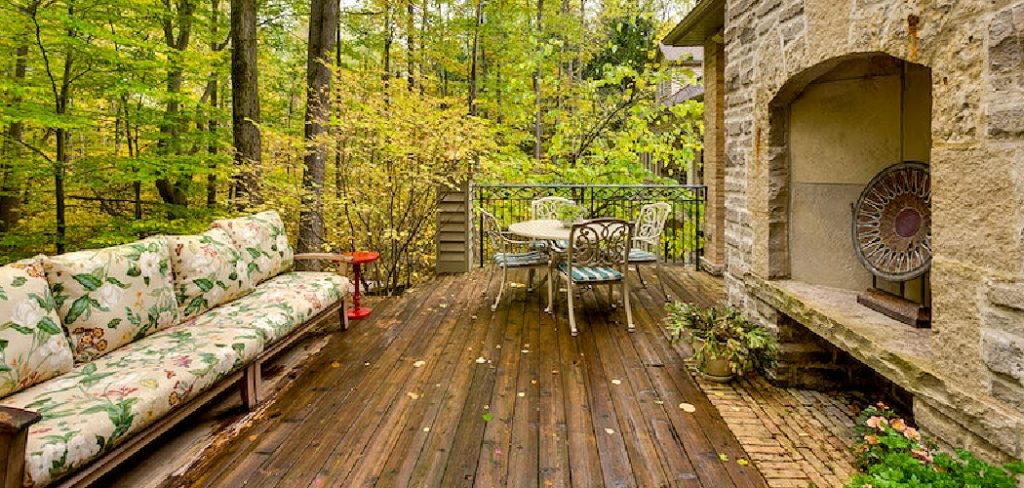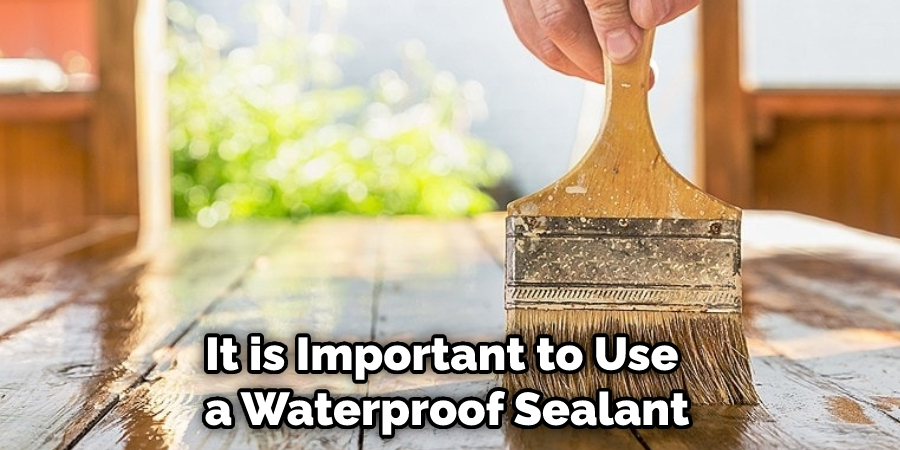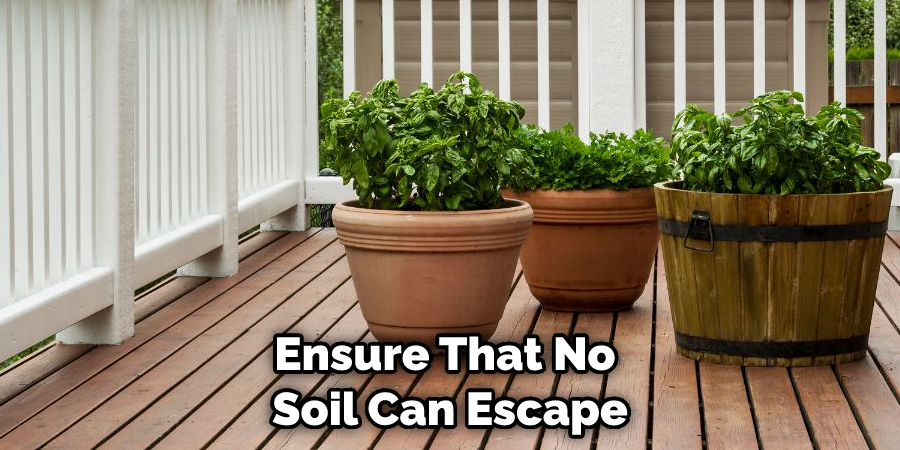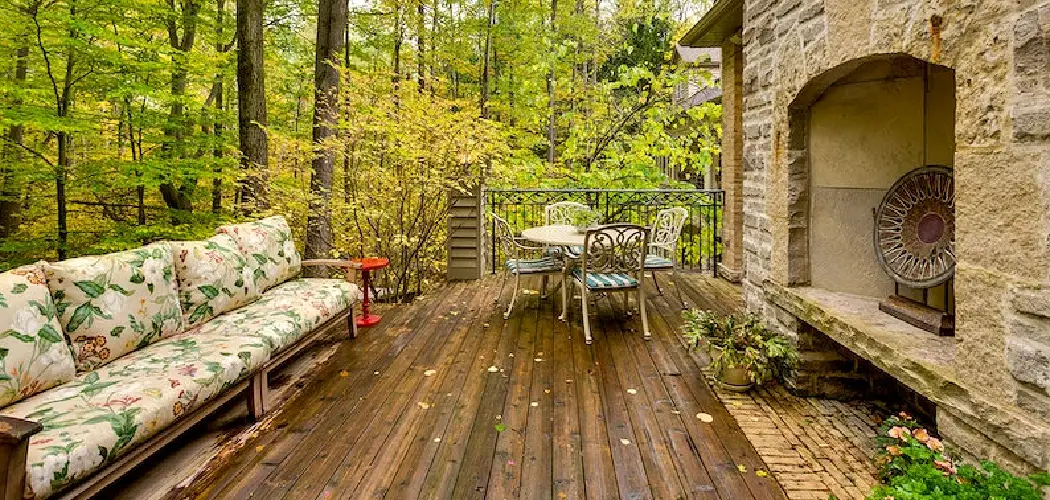Deck planters are a great way to add color, texture, and interest to your outdoor space. However, they can also cause damage if not properly protected. Water from the soil in the planter can seep into the deck boards, causing discoloration, warping, and rot. Additionally, heavy pots or planters may leave indentations in the decking material.

One of the major advantages of protecting your deck from planters is that it can help extend the life and beauty of the deck. By taking steps to protect your deck from potential damage caused by planters, you can prevent costly repairs or replacements in the future. Protecting your deck from planters can keep it looking new and vibrant, as the moisture and dirt buildup from planters can cause discoloration and wear and tear over time. You can find step-by-step instructions on how to protect deck from planters in this blog article.
Step by Step Processes for How to Protect Deck From Planters
Step 1: Inspect the Deck and Planters
Before attaching the planters to your deck, it is important to ensure that there are no damaged or weak areas that could lead to cracking or other damage. When attaching planters to a wooden deck, one of the best ways to protect the surface from wear and tear is by using deck spacers. These spacers provide a cushion between the planter and the deck to reduce friction and protect against moisture damage.
Step 2: Use Deck Spacers
Deck spacers are designed to provide a cushion between the planter and the deck. This will help protect the wood from damage caused by shifting, cracking, or water penetration. To install deck spacers, place them under each planter before attaching it to your deck. The spacers should be the same width as the planter and should not be placed too close together or too far apart.
Step 3: Use Waterproof Sealants
Once the deck spacers are in place, it is important to use a waterproof sealant around the edges of each planter. This will help keep moisture out, which could potentially cause wood to rot or warp over time. It is best to use a sealant that is specifically designed for outdoor use, as this will provide the highest level of protection.

Step 4: Keep the Planters Clean
Finally, it is important to regularly clean the planters and deck surfaces to keep them in good condition. This will help reduce the risk of damage from outdoor elements such as wind, rain, and sun. Additionally, cleaning can help prevent mold and mildew growth which could cause further damage.
By following these steps on Protecting Deck From Planters, you can ensure that your deck is properly protected from wear and tear caused by planters.
Tips for How to Protect Deck From Planters
- Use terracotta pots instead of plastic planters on your deck, as they absorb moisture and can easily change out for seasonal planting.
- To prevent water damage, place a thick layer of mulch or stones between the planter and the wood surface.
- Ensure that the pots you use have sufficient drainage holes to prevent water from pooling in the bottom.
- Use saucers or trays underneath your planters to catch excess water and keep it away from the deck surface.
- Elevate your planters off of the ground using a platform, so they don’t directly contact the deck surface.
- Check your planters periodically for signs of mold or water damage.
- Move the planters to higher ground if there is a threat of flooding.

Following these tips will help you protect your deck and enjoy your outdoor planters safely and comfortably.
How Do You Prepare Your Deck for Planter Installation?
When it comes to protecting your deck from planters, preparation is the key. To properly prepare your deck for a planter installation, you should take the following steps:
- Clean and Seal the Deck: First and foremost, you should thoroughly clean and seal your deck before installing planters. This will help protect it from water damage and rot.
- Choose the Right Planters: When selecting planters for your deck, choose ones that are made specifically to hold plants or other items without damaging the deck’s surface. Plastic and ceramic planters are great options because they won’t damage the wood if they’re left out in bad weather.
- Place a Barrier Between the Planter and Deck: To further protect your deck from water damage, place something between the planter and the deck such as a plastic or rubber mat. This will prevent water from seeping into the wood and causing rot.
- Move Planters Regularly: If you’re going to leave them on your deck for a long time, make sure to move them around regularly. This will help prevent water damage and keep the areas under the planters from becoming discolored due to pooling moisture.

By following these steps, you can protect your deck from planters and ensure that it looks great for years to come.
How Can You Protect the Deck From Water Damage Due to Planter Seepage?
- Check the Planter’s Drainage: Make sure there is sufficient drainage in the bottom of the planter and that it is not collecting water. If necessary, add more holes or drill more to ensure proper drainage.
- Add a Waterproof Barrier Between the Plant and Deck: Line the bottom of your planter box with a waterproof barrier to prevent water from seeping out of the planter and onto your deck. This can be something as simple as plastic sheeting or a liner specifically made for planters.
- Elevate the Planter: If possible, elevate the planter off the ground to reduce water damage to your deck. You can achieve this by placing it on a bed of gravel, blocks or bricks.
- Place the Planter in a Sheltered Area: Make sure to place your planters in an area that is not exposed to direct sunlight and rain, such as under an overhang or canopy. This will help reduce excessive moisture contact with the deck surface.
- Seal the Deck Surface: After you have placed your planters, it is recommended to periodically seal the deck surface with a waterproof sealant or stain that will protect it from water damage and other elements. Be sure to follow the manufacturer’s instructions for the best results.
In addition to these five steps, regular maintenance and inspection of your planters and deck will ensure that they remain in good condition. Following these tips can help protect your deck from water damage caused by planter seepage.
How Often Should You Check and Clean the Planters on Your Deck?
It’s important to check and clean the planters on your deck regularly if you want them to last and continue looking great. How often you should check and clean them depends on how much use they get and their location. For example, if your planters are located in a shady area, you will likely not need to check and clean them as often. However, planters located in direct sunlight or in a high-traffic area may require more frequent maintenance.
When cleaning your planters, be sure to use mild detergent and warm water. You can use a soft scrub brush for extra cleaning power if there are stubborn stains. Afterward, rinse the planters thoroughly with clean water to remove any soapy residue. It’s also important to check for signs of wear and tear on your planters, such as cracks or rotting wood. If these are present, take steps to repair the planter or replace it if necessary properly. This will help ensure that your planters remain intact and safe to use.
How Can You Prevent Damage Due to Plants, Soil, Fertilizer, or Other Chemicals in the Planter Beds?
The most important step in protecting decking from planter beds is to use a barrier between the soil and the deck surface. This could be done using heavy-duty plastic sheeting, such as polyethylene or polypropylene, which you can cut to fit the size of your planters. The plastic should be laid down directly beneath planter boxes or pots, overlapping the edges to ensure that no soil can escape and get onto the deck.
You should also make sure to place saucers beneath your planters, which will catch any water that drains through or out of the pot. Make sure these are large enough, so they don’t overflow and cause damage. If you’re using larger planters, you can also place casters beneath them to make it easier to move them around and prevent the soil from settling. When planting your plants, make sure to use slow-release organic fertilizers with low nitrogen content. These won’t damage the decking as quickly as fertilizer with high nitrogen content.

Conclusion
In conclusion, Protecting your Deck From Planters is an important step in ensuring the longevity and integrity of your outdoor deck. Properly installing waterproof membranes, arranging planters strategically, and following a regular cleaning routine can protect your deck from water damage due to planter exposure. With a little bit of effort and preventative maintenance, you can keep your deck looking great and lasting for years to come. Ultimately, Protecting Deck From Planters is a great investment that can save you time and money in the future. I hope this article has been beneficial for learning how to protect deck from planters. Make Sure the precautionary measures are followed chronologically.

